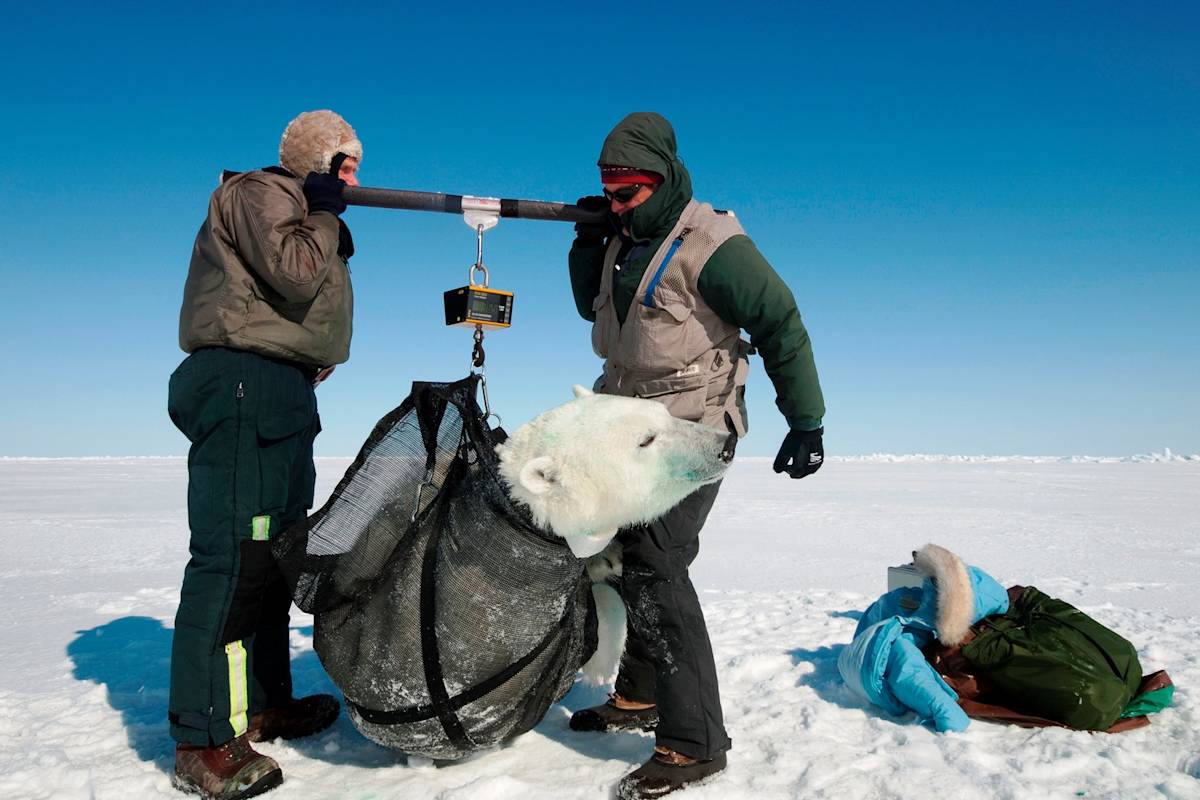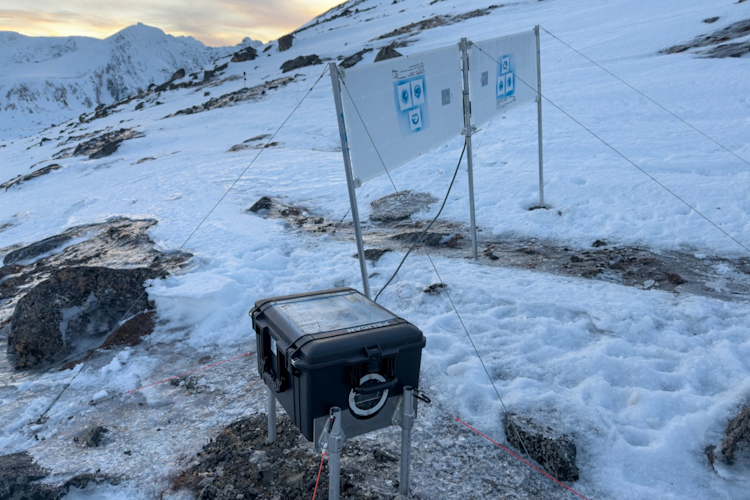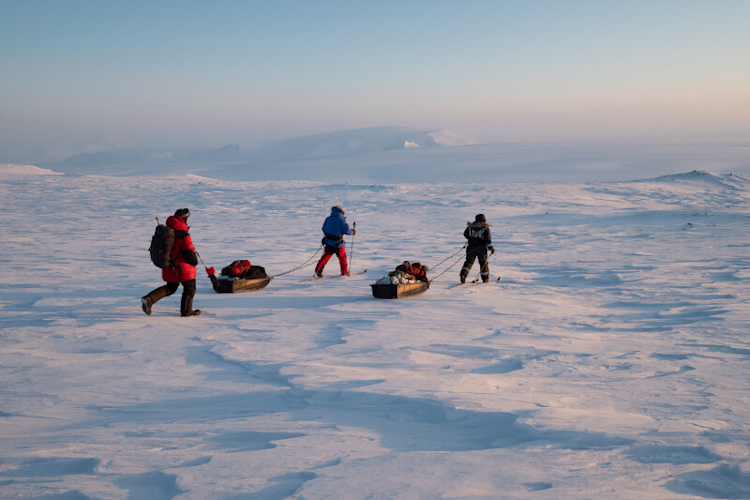Polar Bear Questions
I recently received this thoughtful question from Rasmus: “In the field, how do you measure the body mass of a massive animal like the polar bear?”
Being able to pack on the pounds and stay in good body condition is everything to a polar bear: the more energy it has stored as body fat, the better the chance it will make it through the lean, often ice-free, summer period. Also, for adult female bears, the better body condition they’re in, the higher their chance of giving birth to cubs and having them survive to independence.
But how do scientists determine the body weight of a wild polar bear, an animal that is much heavier than they are? Researchers currently rely on three main methods: by assessing them visually, by taking body measurements, or by weighing them. Each comes with its own pros and cons.
To visually assess a polar bear’s body condition, researchers have developed a “standardized fatness index.” The index ranges from skinny to obese and is used to score bears in the wild. As you can see from the category descriptions, the main telling points are the visibility of vertebrae and hip bones, as well as the amount of fat on the bear’s rump. The index can be applied to all visible polar bears within a reasonable distance, regardless of whether they’re sedated or awake. However, this method does not provide us with a precise body weight.
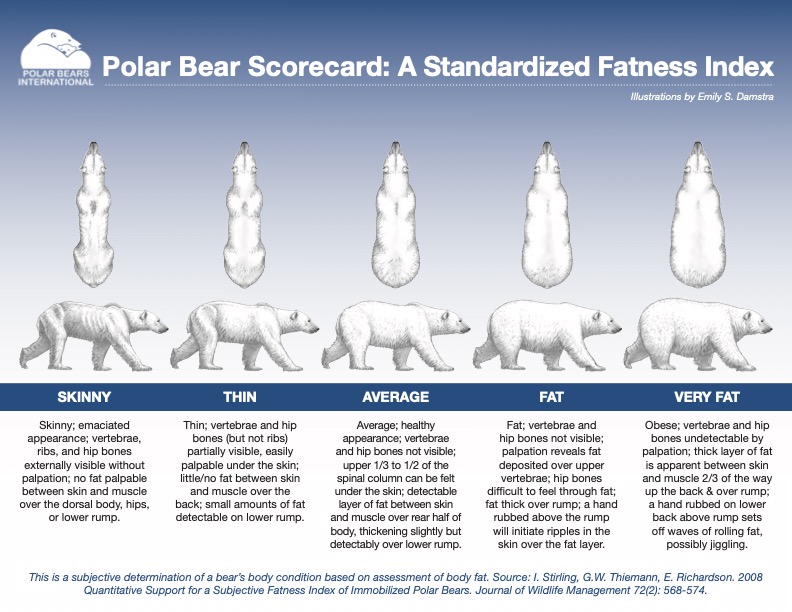
If data is needed on the exact body weight of a polar bear, researchers must have the bear in hand. This of course can only happen if the bear has been sedated. Once the bear can be safely approached, there are a couple of options. First, researchers have developed an equation that allows us to estimate a polar bear’s body weight based on its body length and chest circumference—both of which are relatively quick and easy to measure on a sedated bear in the field.
However, while this gives a much more precise indication of the bear’s weight than the fatness index, there are small variations between polar bear populations that affect how well the equation works. The other option, if data is needed on the bear’s exact weight, is to use one of the two ways seen in the photos above and below. Both require an electrical scale and larger pieces of equipment, plus a bit of muscle. The tripod can be tricky to work with in deep snow but is better for your back; using the pole is quicker but physically harder.
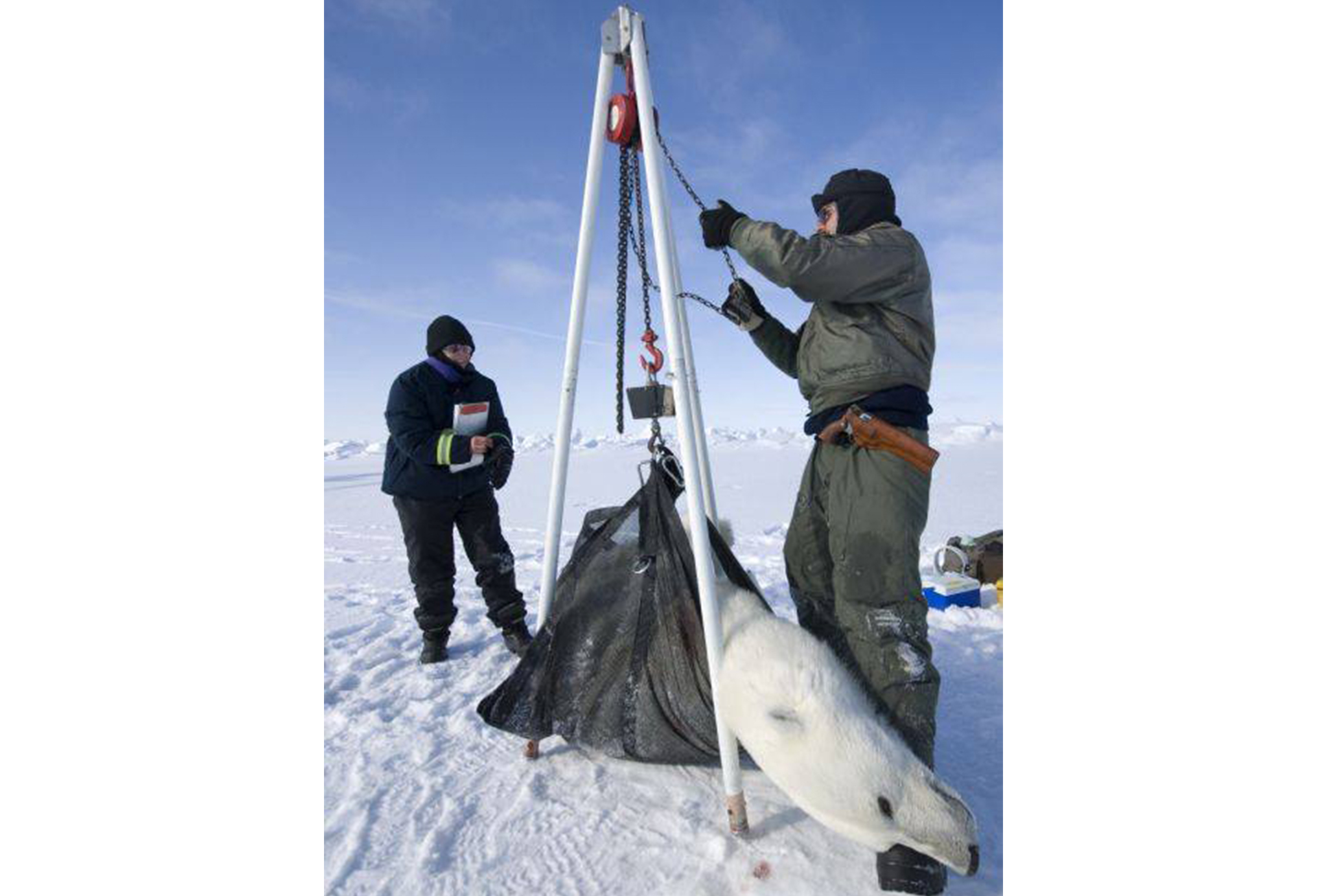
So why do researchers weigh and measure polar bears in the first place? Consistently using the fatness index, taking body measurements, or weighing polar bears in the wild allows us to assess how the various populations around the Arctic are faring over time; some populations have data spanning several decades. This data allow us to answer questions like: Are the bears doing well enough to reproduce? To nurse? To survive the longer periods on land without ice and without seals?
Gathering data on polar bear body condition every year allows us to see changes in a population’s overall health over longer periods of time, thereby providing essential information for management discussions and decisions.
Dr. Thea Bechshoft is a staff scientist with Polar Bears International, based in Aarhus, Denmark. Follow her popular Polar Bear Questions series on Facebook and Instagram—and ask a question of your own!
